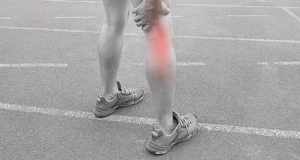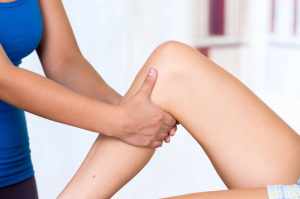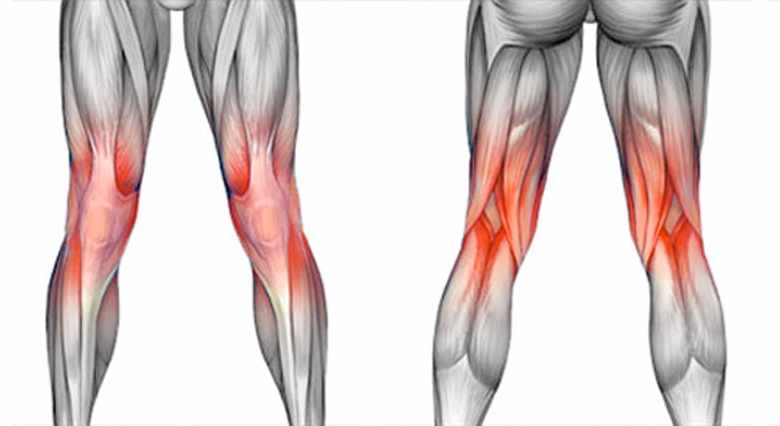The knees are complex and significant joints that act as a large hinge. The knee pit forms a shallow depression behind these joints. Its bones, ligaments, and cartilage are essential for walking, jumping, and running. Unfortunately, back of knee pain affects a large segment of the population.
The strain on the joints can be mild, severe, or even debilitating. It can be due to injuries, fatigue, or harmful exercises. Even sportspersons and athletes are not exempt from this troublesome ailment. However, back of knee pain is treatable using various effective methods after diagnosing the causes.
Table of Contents
Main causes of back of knee pain

Common cramps: muscle tightness
Lethargy and a sedentary lifestyle lead to leg cramps. The muscles overwork, without stretching breaks, and become very tight. Sudden spasms arise and subside within seconds or minutes. They lead to discomfort, mild or severe pain. Cramps also occur due to nerve damage, dehydration, tetanus infection, blood toxins, and liver-related diseases.
Runner’s leg: causes wear and tear
The knee joint’s protective cartilage becomes very thin, and the femur and tibia bones rub against each other. This unwanted activity leads to dull and aching discomfort behind the knee. The runner’s leg also causes weakness and restricted movements. It makes the knee buckle or gives out randomly. You also feel grinding and buckling sensations when bending the joints.
Baker’s cyst: grows and builds pressure
A pocket of fluid collects and gradually builds up near the knee joint. Initially, the cyst looks small and does not cause much pain. But it can grow and shift to the surrounding muscles. Consequently, there is pain due to pressure on the nerves and tendons. The Baker’s cyst can grow as large as a table tennis ball and cause tingling sensations. It is treatable and managed by apt therapy.
Osteoarthritis: leads to the back of knee pain
It is a degenerative disorder that makes the cartilages very thin. The knee bones fail to co-operate in smooth, seamless movements. The joints become stiff, and bending the knee becomes very problematic. It happens due to aging or auto-immune disorders like rheumatoid arthritis and lupus. The joint goes out of shape leading to pain, unstable knees, lumps, or cysts in the knee pit.
According to experts, you might have to go for a knee replacement surgery to rectify the condition. Make sure that if you opt for such a big decision, you should get it done from the best orthopaedic surgeon possible. This is a sensitive surgery that needs to be done just about right. If you are not careful, you might end up with mobility issues even after spending a lot of money post the knee replacement surgery.
Meniscus tears: halts your movements
The cartilage on either side of the knee, called the meniscus, gets damaged. You can hear a distinct and audible popping sound. It happens due to twisting movements while bending the knees or squatting. Initially, the injury remains latent but becomes worse in the next few days.
It debilitates knee movement and causes pain and swelling around the joints. Also, the legs become weak and suffer from fatigue. The knee also gives out or tends to lock up when subjected to prolonged usage.
Hamstring strain: sportsman’s nightmare
The back of knee pain gets aggravated by hamstring muscle injuries. Muscle tear occurs due to athletic exercises or sporting activities. Running fast in short bursts can lead to this damage. Players who play team and racquet sports like tennis, football, and basketball are also very susceptible.
ACL injuries: serious inflammation
The anterior cruciate ligament or ACL is a tissue band that runs in front of the knee joint. It is essential for keeping the knee stable and reliable. But sudden stops or changes in direction can damage the ligament. The joint area becomes very painful due to inflammation and tears. The ACL strain can get immediately identified with a popping sound. Severe injury demands long periods of bed rest and even reconstructive surgery.
DVT: painful, blood clots
The veins deep inside the legs develop a thrombosis or blood clot. You can feel the pain in the legs and behind the knees. Deep vein thrombosis or DVT causes a lot of pain while getting up from a seated posture. It is the result of aging, a sedate lifestyle, smoking, or obesity.
The skin becomes sore or red when touched. Swelling, fatigue, and surface veins are the other main symptoms. It has to get diagnosed and treated using medicines and rest to dissolve the clots. Otherwise, the clot can spread to other organs and cause severe complications.
PCL tears causes back of knee pain
The posterior cruciate ligament does not tear easily or frequently. But vehicle accidents and falling directly on the knee from a height can be traumatic. Such events can completely tear the ligament. They inhibit movement and cause stiffness, pain, and inflammation. Rest and surgery are essential for treating PCL tears.
Therapeutic techniques for back of knee pain
Staying fit and healthy is important as prevention is better than cure. But if the pain strikes you, then stretching is a good solution. Keep the knee-friendly muscles like calves, hamstrings, and quads very flexible. You can manage mild forms of pain and develop efficient muscle responses to daily activity. The RICE technique is also effective for treating mild to moderate levels of pain. It stands for resting, icing, compressing, and elevating the leg. The therapy reduces symptoms like swelling and aching.

Resting the leg – Prolonged rest can help in correcting the movement disorder. A sufficient amount of relaxation is also useful in overcoming fatigue and exhaustion.
Icing – Joint stiffness and tightening are treatable by applying heat. But icing is necessary to bring down swelling in the knee pit. You can apply cold packs 10 to 20 minutes thrice daily for 2 or 3 days. They will bring down the soreness and stop muscle contractions.
Compressing band – Elastic wrapping band compresses the area around the knee by applying external pressure. The wrap also improves the range of motion by reducing blood clots, joint inflammation, and discomfort.
Elevating the feet – Lift the leg and rest it on a raised stool or couch. It reduces the swelling and brings down the severity of back of knee pain.
Some other therapeutic methods suggested by the doctors are below. Usually, doctors recommend these after a clinical examination, MRI, or CT scan of the painful areas.
- Nonsteroidal anti-inflammatory drugs like ibuprofen reduce swelling and pain
- Steroid injections to lower the severity of symptoms
- Serious injuries require prolonged physical therapy or even surgery

